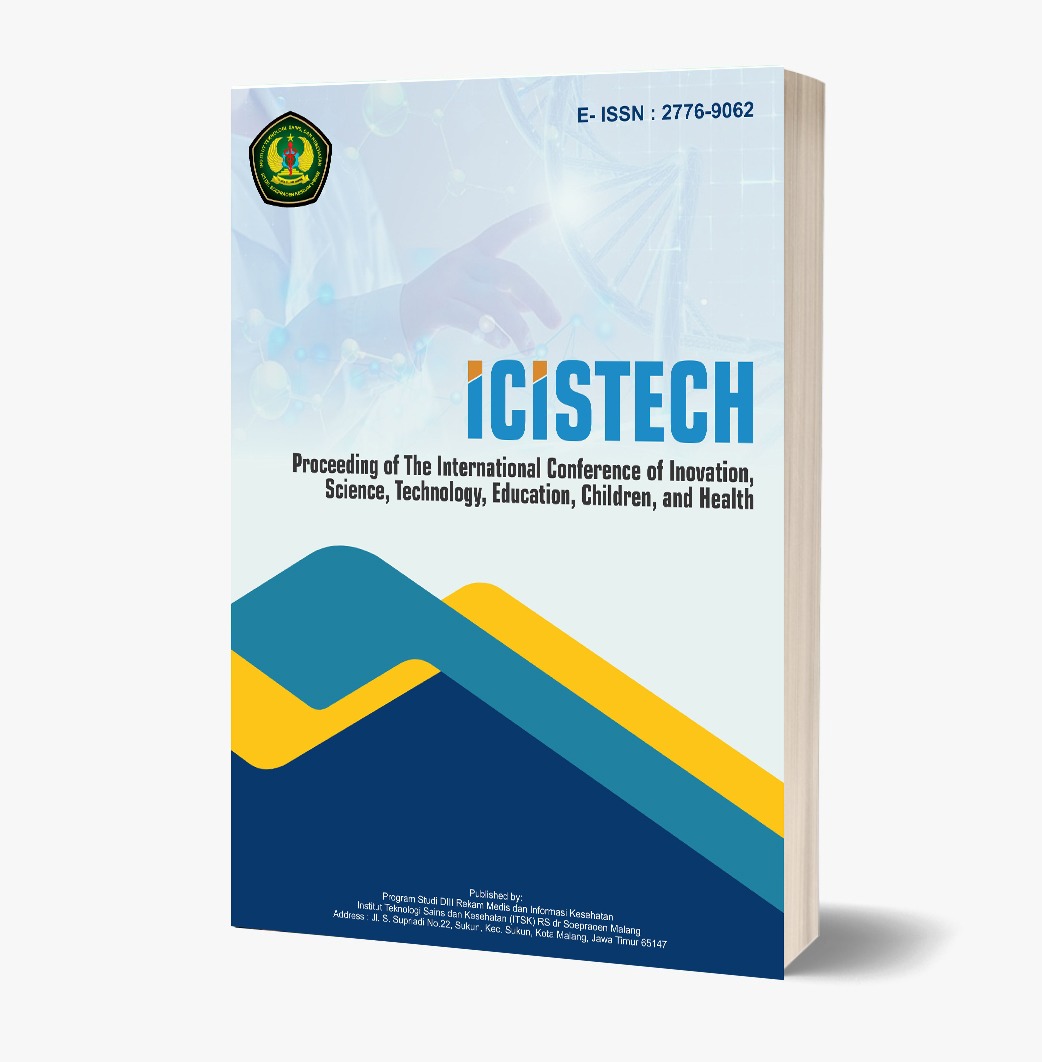Recognizing Micro Expression Pattern Using Convolutional Neural Networks (CNN) Method During Emotion Regulation Training for Parents in The Pandemic Era
DOI:
https://doi.org/10.62951/icistech.v3i2.68Keywords:
emotion, expression, Convolutional Neural NetworksAbstract
During this pandemic, most of people’s activities are carried out through digital media. Both learning and working processes are using the video-conference platform, a platform deemed effective to facilitate the needs of distance communication. One of the limitations of using video-conference lies in difficulty in understanding emotional conditions based on solely camera video. Hence, speakers generally do not know their interlocutors’ feelings related to the materials being presented. Grounded on this issue, we examined a facial expressions-based emotion recognition tool. Micro expression is one of the micro-languages of communication. Machine learning model developed in this study was Deep Learning with Convolutional Neural Network (CNN). The library that was used was Keras, this was used to recognize micro expression pattern. Additionally, OpenCV was also used for the general face recognition process. Both libraries were operated using Python programming language. The result of the micro expression test involving thirty participants detected three types of facial expression, namely joy, sadness, and anger expression. However, face recognition applied in the present study still needed some improvements, especially for anger and sadness expression. With regard to joy expression, 89% of the expression were recognized. Based on the recorded data, it is necessary to improve the recordings criteria to obtain a clearer expression.
References
Amda, K., & Fitriyani, R. (2016). Membaca ekspresi wajah. Huta Publisher.
Bartlett, M. S., Donato, G., Movellan, J. R., Hager, J. C., Ekman, P., & Sejnowski, T. J. (1999). Face image analysis for expression measurement and detection of deceit. Proceedings of the International Conference on Computer Vision, 8–15. Retrieved from https://papers.cnl.salk.edu/PDFs/Face%20Image%20Analysis%20for%20Expression%20Measurement%20and%20Detection%20of%20Deceit%201999-3585.pdf
Collier, G. (2014). Emotional expression. Psychology Press.
Ekman, P. (2003). Emotions revealed: Understanding faces and feelings. Owl Books.
Ekman, P., Friesen, W. V., & Ellsworth, P. (2013). Emotion in the human face: Guidelines for research and an integration of findings. Elsevier.
Fernandez-Dols, J. M., & Russell, J. A. (2017). The science of facial expression. Oxford University Press.
Gross, J. J. (1998). The emerging field of emotion regulation: An integrative review. Review of General Psychology, 2(3), 271–299.
Herring, D. R., Burleson, M. H., Roberts, N. A., & Devine, M. J. (2011). Coherent with laughter: Subjective experience, behavior, and physiological responses during amusement and joy. International Journal of Psychophysiology, 79(2), 211–218. https://doi.org/10.1016/j.ijpsycho.2010.10.007
Lim, J. A. P., Paoline, G. P., Kusuma, A., & Zahra, A. (2019). Facial emotion recognition using computer vision. In Proceedings of the 1st 2018 Indonesian Association for Pattern Recognition International Conference (INA-APR 2018) (pp. 46–50). https://doi.org/10.1109/INAPR.2018.8626999
Manizar, E. H. M. (2017). Mengelola kecerdasan emosi. Tadrib: Jurnal Pendidikan Agama Islam, 2(2), 198–213.
Pardede, J. A. (2020). Ekspresi emosi keluarga yang merawat pasien skizofrenia. Jurnal Ilmiah Keperawatan Imelda, 6(2), 117–122. https://doi.org/10.2411/jikeperawatan.v6i2.403
Schwartz, J. P., Thigpen, S. E., & Montgomery, J. K. (2006). Examination of parenting styles of processing emotions and differentiation of self. Family Journal: Counseling and Therapy for Couples and Families, 14(1), 41–48. https://doi.org/10.1177/1066480705282050
Wati, D. E., & Puspitasari, I. (2018). Kekerasan terhadap anak, penanaman disiplin, dan regulasi emosi orang tua. Varia Pendidik, 30(1), 21–26.
Yan, W. J., Wang, S. J., Liu, Y. J., Wu, Q., & Fu, X. (2014). For micro-expression recognition: Database and suggestions. Neurocomputing, 136, 82–87. https://doi.org/10.1016/j.neucom.2014.01.029
Zachari, C., Jones, D. J., McKee, L. G., Baucom, D. H., & Forehand, R. L. (2017). The role of emotion regulation and socialization in behavioral parent training: A proof-of-concept study. Behavior Modification, 43(1), 1–23. https://doi.org/10.1177/0145445517735492
Downloads
Published
How to Cite
Issue
Section
License
Copyright (c) 2023 Proceeding of The International Conference of Inovation, Science, Technology, Education, Children, and Health

This work is licensed under a Creative Commons Attribution-ShareAlike 4.0 International License.













